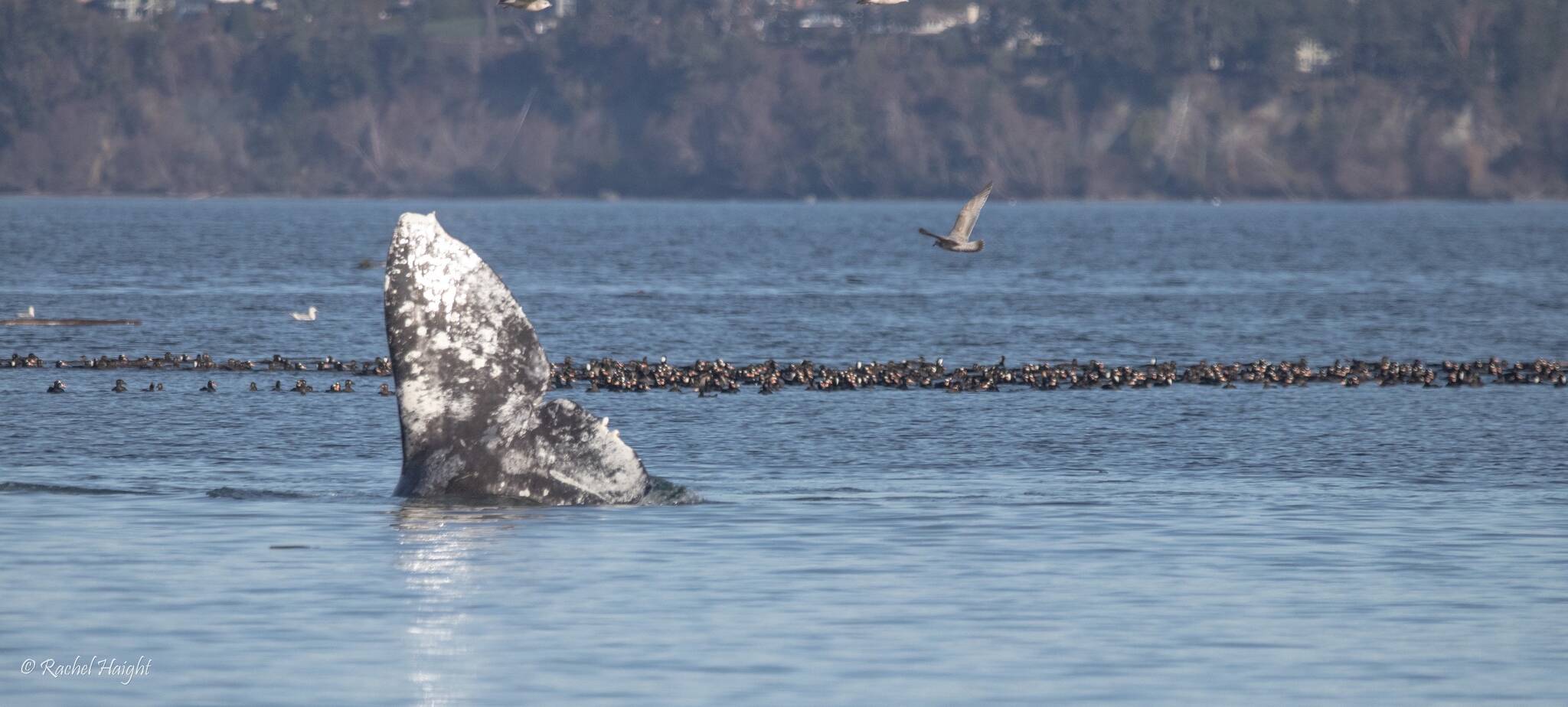Cetacean enthusiasts have the opportunity to give names to members of the population of gray whales known as Sounders that come to North Puget Sound every year to feed.
Orca Network and Cascadia Research Collection are partnering to create a naming contest. From Wednesday, March 29 to Sunday, April 2, the public can vote for their favorite choice from a selection of names provided. The poll will be available on both organizations’ websites and social media pages.
Though each Sounder has its own unique ID number, only some have been given names. The contest will provide names for five more whales.
Cascadia Research Collective has been identifying the Sounders since 1990. Numbers have grown in the past few years, possibly due to an unusual mortality event that causes the whales to stray off the beaten path in search of more food.
“We think it’s in that period that the whales break off from the migration and find new areas to feed,” said John Calambokidis, a founder of the nonprofit research organization.
Eastern North Pacific gray whales follow a migratory pattern that spans from Mexico to the Arctic. While passing by Washington state, the Sounders separate from the others to feed on the abundant ghost shrimp that can be found in the areas around Whidbey and Camano islands.
When Calambokidis first started identifying the Sounders in 1990, he counted six. Last year, a total of 20 were counted. This year’s tally is up to 12 and still growing, since spring is the time of year when the gray whales return.
The Sounders are identified by pigmentation patterns on their sides and a series of bumps referred to as knuckles on their dorsal hump that are distinctly shaped and spaced.
Calambokidis said the whales’ pitstop in Puget Sound is a high-risk feeding strategy, with incredibly shallow water exposed at low tides. It’s likely that desperation led them here to feed in the first place.
“If they get their timing wrong, they end up high and dry,” he said.
Still, year after year, the same whales return to Puget Sound. The first ones Calambokidis saw in 1990 are still coming around.
“Despite these unusual mortality events that have affected the overall population, the Sounders have shown remarkable survival,” Calambokidis said, adding that over the past three decades, only two whales that are missing have possibly been lost during the mortality events.
Along with increased numbers of the Sounders, Calambokidis has also seen them staying around longer. The majority are in the area between March and June, but a few have lengthened their stay. One whale has been continuously feeding in the area since March of last year and another two showed up early in December and January, indicating that they decided to forgo the winter trip down to Mexico.
Besides the naming poll, Cascadia Research Collective and Orca Network are also working together to create an updated booklet and ID guide of the Sounders, which will be available in mid-April. And of course, the Orca Network is gearing up for its annual Welcome the Whales parade and festival on April 15 and 16 in Langley.



